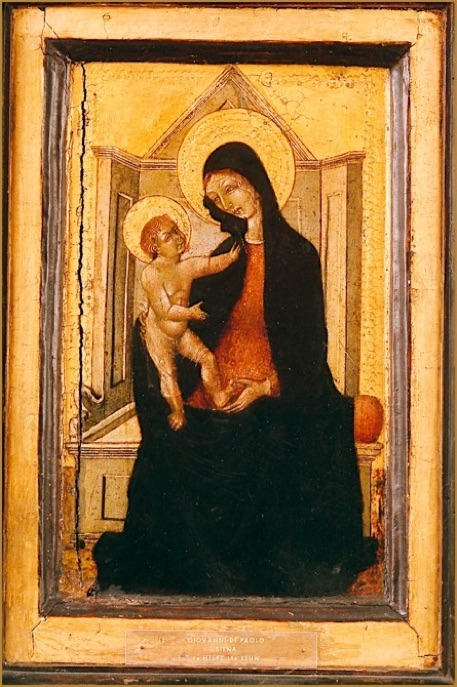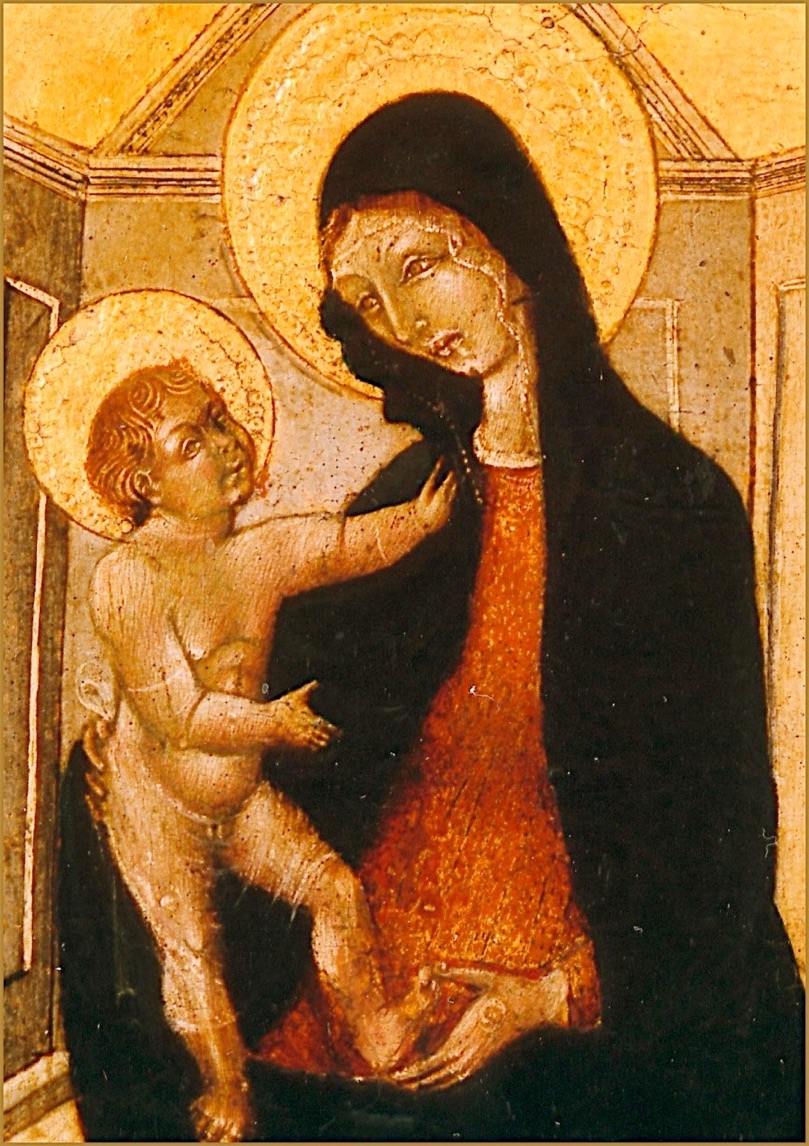The Digitalisation Project Castle Huis Bergh is the intellectual property of the Stichting Musick’s Monument. Ing Hans Meijer was responsible for the technical realisation; Dr Willem Kuiper for the scholarly input. Thanks are also due to the Anjer Cultuurfonds Gelderland; the Stichting de Verenigde Stichtingen “De Armenkorf” in Terborg and “Het Gasthuis te Silvolde”; Mrs P. Tijdink-Hermsen; Mrs L.J.C. Meijer-Kroonder; and the Giese family.




Panel
Giovanni di Paolo (1403-1483)
Italy, Siena
Madonna with Child
1450-1475
Jan Herman van Heek, the last owner of Castle Bergh before it became a museum, bought among other works of art this panel from the Cologne Romboux* collection. It depicts Mary and her son, their delicate features showing Sienese painting at its best. Note how the folds of Marys cloak are made more real by incisions. The throne she is sitting on is fairly simple, executed with a keen eye for perspective, but with little ornamental detail. In medieval and early renaissance art, the Virgin can always be recognized by the clothes she wears: a red robe and a blue cloak. With her red and black ensemble, Giovanni di Paolos Mary seems to depart from this tradition. There is, however, more than meets the eye, and Giovanni is not such an innovator after all: the Virgins cloak was originally blue, but the precious lapis lazuli has come off, so that now, only the black underlayer is still visible. Even without the heavenly blue lapis lazuli that was reserved for the depiction of holy persons, we can see that we are dealing with saints here, for the mother and son have haloes around their heads. In this case, the haloes were not made by Giovanni himself, but by another, unidentified artist. Some go as far as to say that Giovanni di Paolo had nothing whatsoever to do with the whole panel.

